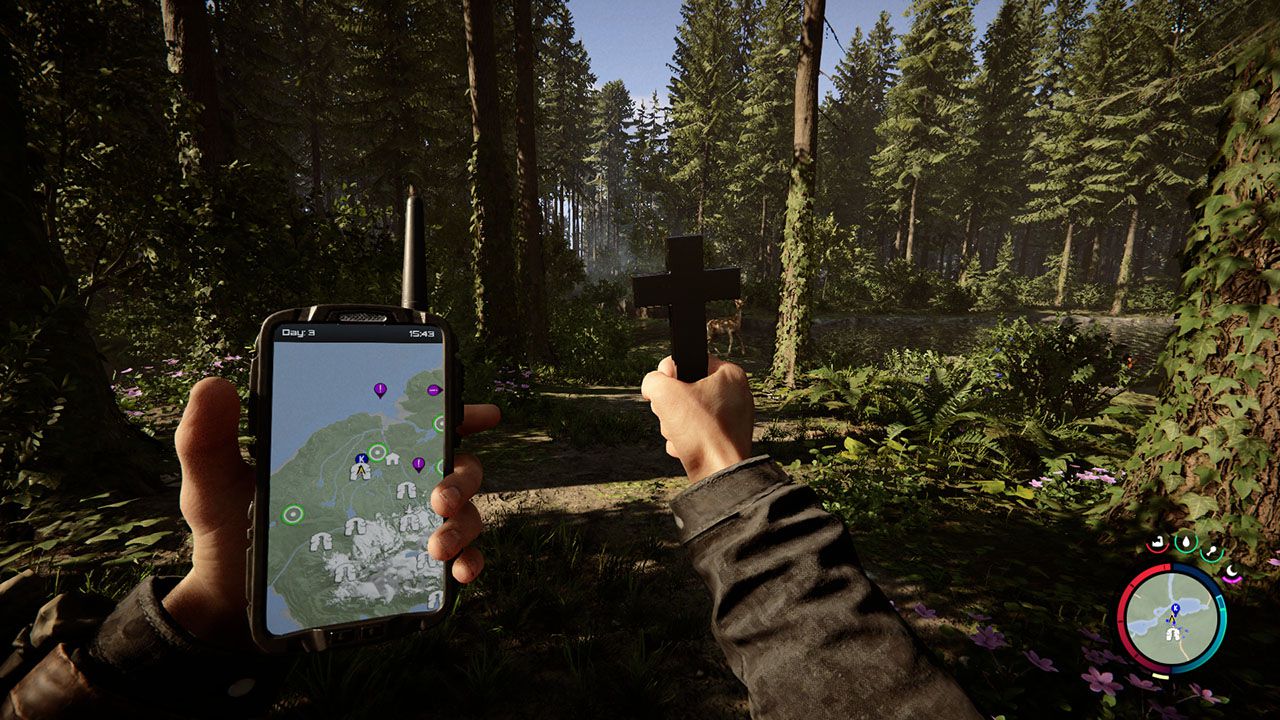Surviving the harsh wilderness of 99 Nights in the Forest is already an incredible challenge, but with the taming update, players now have the chance to turn wild animals into loyal allies. Pets can follow you, defend you, and add new depth to your survival experience.
In this guide, you’ll discover how to tame pets step by step, where to find the Taming Flute, how to play the taming minigame, feed your pets, and maximize their potential in battle. We’ll also cover which animals are tamable, how to manage them, and include pro tips and FAQs to help you master this new mechanic.
🪶 What Is Taming in 99 Nights in the Forest?
Taming is a new feature added to 99 Nights in the Forest that allows players to befriend wild animals instead of just surviving against them. Previously, most animals were aggressive or neutral, but now, with the taming system, you can convert them into loyal companions that follow commands and assist in fights.
Once tamed, these creatures become your survival partners — gathering, defending, and traveling beside you through the 99 perilous nights.
🎵 Step 1: Find and Upgrade the Taming Flute
Your journey into pet taming begins with one vital tool: the Taming Flute. Without it, no animal will respond to your attempts at friendship.
🏚️ Where to Find the Flute
- The Old Taming Flute can be found in the Domestication Cabin, located near your initial camp area.
- Once obtained, you can start taming small creatures like bunnies or kiwis.
- To tame tougher animals, you’ll need to upgrade your flute.
🔺 Flute Upgrade Levels
The flute has multiple tiers:
- Old Taming Flute (Level 1) – Suitable for easy pets like bunnies and kiwis.
- Good Taming Flute (Level 2) – Allows mid-tier taming like wolves and foxes.
- Super Taming Flute (Level 3) – Required for advanced animals like bears or mammoths.
⚙️ How to Upgrade
- Use your flute to successfully tame animals and gain XP.
- When the XP bar fills, visit the Upgrade Building near camp to enhance it.
- Higher levels improve taming speed, minigame success, and animal compatibility.
🎯 Step 2: Play the Taming Minigame
Once you’ve found a tamable animal and equipped your flute, the taming sequence begins.
A glowing green circle will appear near the animal, signaling that you can initiate taming. This triggers the taming minigame — a reflex-based challenge that determines your success.
🕹️ How the Minigame Works:
- A red progress bar starts bouncing vertically on the screen.
- You must keep the red bar aligned within a lighter green zone by holding or releasing your input.
- Holding raises the bar.
- Releasing lowers it.
- As long as the red bar stays within the green zone, the taming progress bar will fill up.
- Once the bar reaches 100%, the taming stage is complete.
- Failing to maintain alignment ends the attempt, requiring you to retry.
💡 Pro Tip: The taming minigame is similar to fishing mechanics in other games. Small, calm movements are more effective than rapid taps.
Higher-level animals often require multiple successful minigames before you can move to the feeding phase.
🍖 Step 3: Feed the Animal Correctly
Once you’ve completed the taming minigame, the animal becomes neutral and demands specific food items. Feeding is crucial to winning the creature’s trust — fail to provide the right food, and it may run away.
🍗 Feeding Requirements by Animal Type:
| Animal | Required Food | Difficulty |
|---|---|---|
| Bunny | 1 Carrot | Easy |
| Kiwi | 1 Berry | Easy |
| Wolf | 2 Steaks | Medium |
| Arctic Fox | 1 Fish, 1 Berry | Medium |
| Bear | Ribs + Stew + Pumpkin | Hard |
| Mammoth | Pumpkin + Cake | Extreme |
Feed the exact items requested. Each feeding session increases your bond, displayed as faces turning into hearts. When all stages show hearts, the animal becomes your permanent pet.
🐾 Step 4: Manage and Use Your Pets
After successfully taming an animal, it will become your faithful companion. You can command your pet to perform specific actions that assist in survival and combat.
🔧 Pet Commands:
- Follow: The pet moves alongside you, attacking enemies that approach.
- Sit: The pet stays in place and does not engage in combat.
- Release: Dismiss the pet if you want to tame another one.
- Rename: Customize your pet’s name for easier management.
Each pet behaves differently based on its species. Wolves and bears are aggressive fighters, while kiwis and bunnies serve as lighter, supportive companions.
🧭 Step 5: Choose Which Animals to Tame
Not every creature in 99 Nights in the Forest can be tamed, and even those that can vary in difficulty. Some animals require higher flute levels or special feeding items.
🐇 List of Tamable Animals
Easy Tier Pets:
- Bunny
- Kiwi
Mid-Tier Pets:
- Wolf
- Scorpion
- Arctic Fox
High-Tier Pets:
- Bear
- Alpha Wolf
- Mammoth
- Hellephant
Each tier not only differs in difficulty but also in combat ability, health, and loyalty level. High-tier pets can withstand stronger enemies, making late-game nights more survivable.
⚔️ Benefits of Having Pets
Taming animals in 99 Nights in the Forest is more than a cosmetic feature — it can drastically change how you approach survival.
🐕 Combat Assistance
Pets can attack nearby enemies, helping you fend off dangerous beasts and creatures that stalk the forest at night.
🍄 Resource Management
Some tamed animals help you spot resources, such as berries or edible mushrooms, making for more efficient survival.
❤️ Emotional Bond
The emotional reward of watching a once-hostile beast become your ally adds immersion and motivation to the long nights.
🏹 Tactical Strategy
With pets at your side, you can divide enemy focus — sending pets to engage while you attack from range or heal.
💡 Expert Tips for Successful Taming
- Start Small: Practice taming on easy animals like bunnies before moving to wolves or bears.
- Upgrade Early: A higher-level flute drastically increases success chances and shortens taming time.
- Stock Up on Food: Always carry extra food items — nothing’s worse than running out mid-tame.
- Keep Calm During Minigame: Smooth, gentle control wins over frantic spamming.
- Know When to Sit: Pets that constantly engage can attract too many enemies; use “sit” to pause them.
- Be Resource-Wise: Some animals consume rare items — reserve them for powerful allies.
- Build Trust Step-by-Step: The taming process is progressive; rushing it often leads to failure.
🌲 Why Taming Changes the Game
Before the taming update, players relied solely on weapons, traps, and instincts to survive. Now, pets create an entire new gameplay dimension.
🎯 Key Advantages:
- Extra Combat Power: Pets fight beside you, taking pressure off during difficult waves.
- Tactical Depth: Use pets strategically to lure enemies or guard your camp.
- Replay Value: Experimenting with different pet combinations adds variety to survival strategies.
- Progression Loop: Each pet tamed levels up your flute, unlocking tougher animals and rare interactions.
Taming introduces both emotional connection and mechanical depth, making each night feel like a step toward mastery of the forest.
🧩 Troubleshooting Taming Problems
1. Flute Doesn’t Work
- Make sure the flute is equipped in your active slot.
- The animal must be within the green interaction circle.
2. Minigame Keeps Failing
- Focus on smoother movements; rapid pressing causes the red bar to bounce out of control.
- Upgrade your flute — higher tiers make the green zone wider.
3. Animal Won’t Eat
- Check if you’re offering the correct food item.
- Some animals require specific items only available during certain nights.
4. Pet Disappears
- Pets can despawn if you die or leave the area abruptly. Always issue a “sit” command before logging out.
5. Cannot Tame Certain Animals
- Some animals are untamable until specific updates or events unlock them. Always check patch notes for new additions.
🦉 FAQs – Taming in 99 Nights in the Forest
Q1: Can I tame multiple pets at once?
You can tame several animals, but you can only have one active pet following you at a time. Others remain at camp until called.
Q2: What happens if my pet dies?
If your pet dies in combat, it’s lost permanently. You can, however, retame the same species if you find another.
Q3: Does flute durability matter?
Yes. The flute levels determine the type of animals you can tame. It doesn’t break, but its success rate increases with upgrades.
Q4: Can I trade or gift pets to other players?
Currently, pets are bound to your save file, meaning you can’t trade them between players.
Q5: Are there rare or secret pets?
Yes! Some biomes feature hidden creatures that only appear under specific conditions (like the “Hellephant” during the Blood Moon).
Q6: How do I heal my pet?
Feed your pet its favorite food again, or let it rest near campfires to gradually recover health.
Q7: Can pets evolve or level up?
Some pets gain enhanced stats after surviving multiple nights. This isn’t a visual evolution but increases combat performance.
Q8: What if I lose my flute?
Flutes cannot be dropped or destroyed, but if you misplace it, check your storage chest or respawn point — it often reappears there.
🦌 Conclusion: Survive Smarter, Not Harder
Taming in 99 Nights in the Forest transforms the survival experience from lonely endurance to cooperative adventure. Whether it’s a bunny that brings calm to your campfire or a bear that guards you through the darkest hours, pets redefine how you face each night.
With patience, the right tools, and strategy, you can turn the once-hostile wilderness into a loyal team of forest companions. So grab your Taming Flute, stock up on favorite foods, and head into the woods — your next best friend might be waiting behind the trees.
Read Also:

